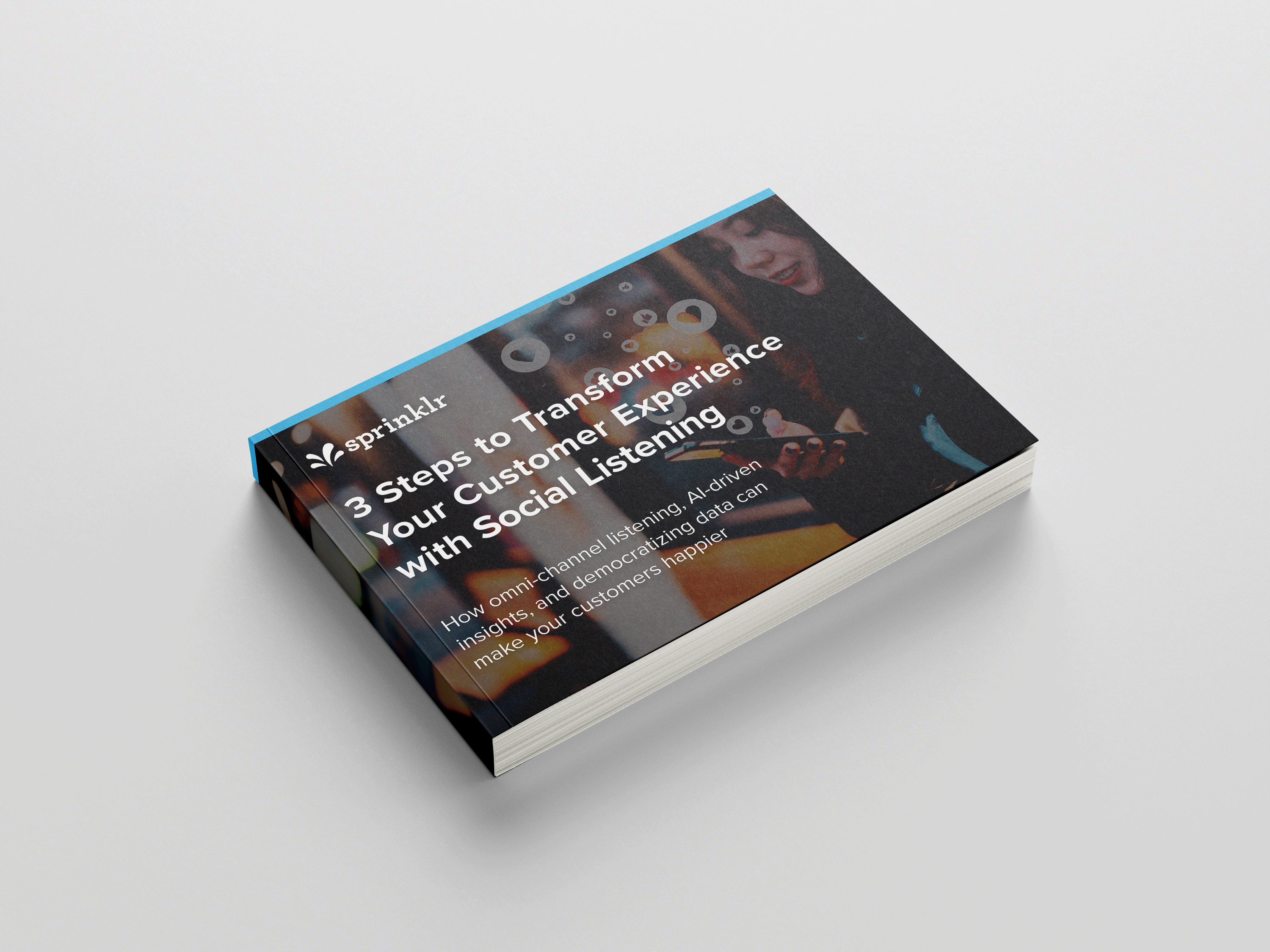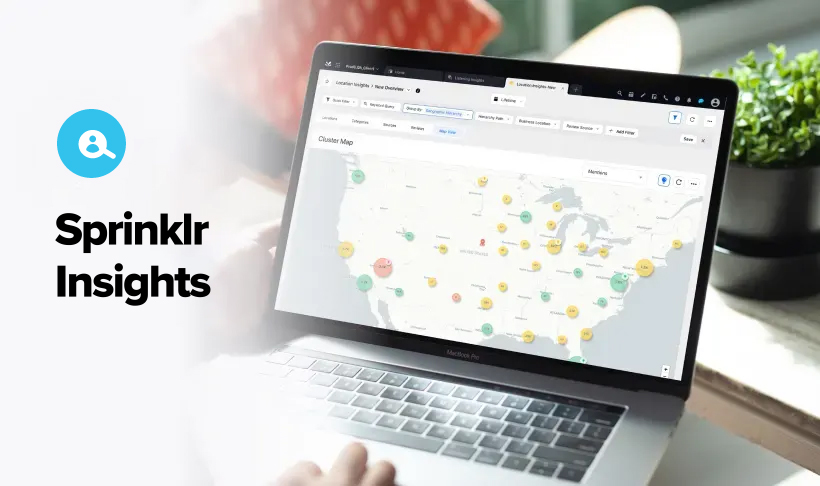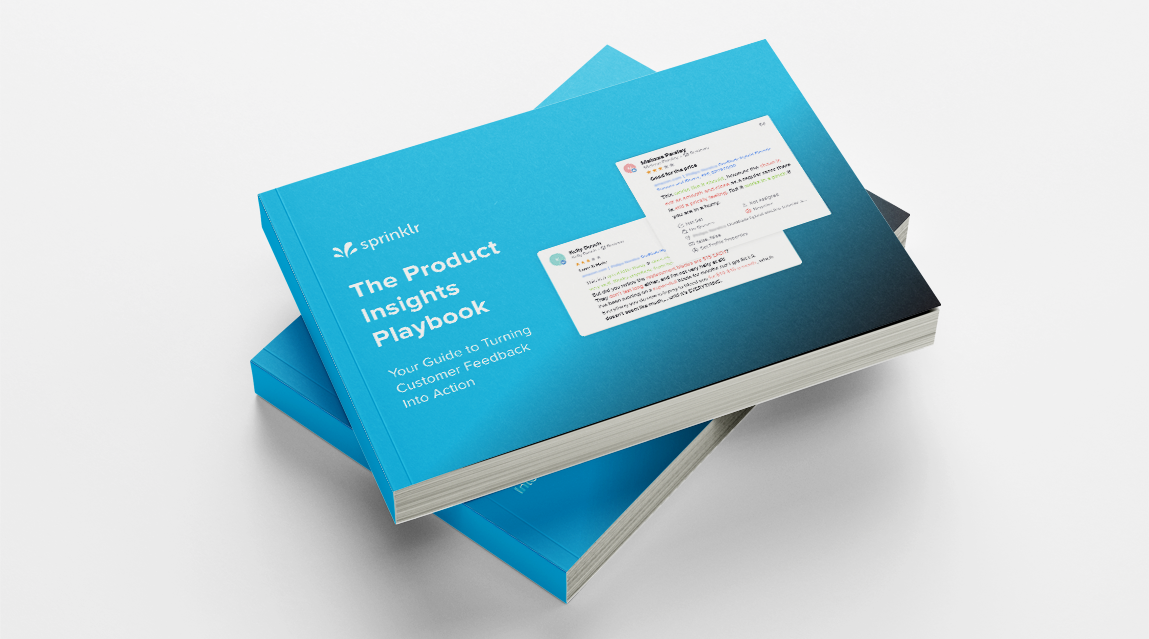- What is audience analysis?
- Types of audience analysis
- What is included in an audience analysis?
- Who should conduct an audience analysis?
- What are the benefits of audience analysis?
- What are the use cases for audience analysis?
- How to conduct an audience analysis
- Discover key customer insights through audience analysis with Sprinklr Insights
What is audience analysis?
Audience analysis is the process of studying the interests, location, demographics, web behaviors, social behaviors, preferences, and other characteristics of a group. Usually conducted by entrepreneurs, marketers, and product managers, it enables you to better understand and classify prospects and customers, and make informed decisions.
Thorough audience analysis helps you learn specific characteristics of your target segment — including psychographics, demographics, behavioral indicators, and sentiment — to understand exactly what your consumers want. This allows you to enhance your business strategy, customer experience (CX), brand perception, and competitive edge.
For instance, if you are planning to open a food outlet, knowing these characteristics of restaurant-goers at the location is vital. Analyzing your target audience’s food preferences will offer your brand key actionable insights for refining the menu and improving advertising and marketing efforts to attract and retain customers.
Types of audience analysis
The more you know your audience, the better you can cater to their interests and needs. So, collecting and studying the right data related to your target segment is essential for your brand. Here are the key types of audience analysis:
Social audience analysis
In social audience analysis, your brand utilizes audience insights from social media platforms like X, formerly Twitter, LinkedIn, and Facebook to gather initial data about users. It reveals the demographics (statistical data that characterizes a group of people) and buying behavior of your social media audience, as well as that of your competitors.
Learn more: 4 ways to maximize social listening and propel your brand with trend analysis
Situational analysis
More relevant for live audiences, situational analysis includes exploring your target segment and categorizing it according to digital presence, demographics, or stages of the marketing funnel. You can learn how seasonal factors or circumstances (e.g., public holidays) influence audience behavior and decision-making.
Branded audience analysis
Branded audience analysis lays a strong emphasis on identifying and learning about the audience of a specific brand (e.g., Apple, Amazon). It allows you to understand the strengths and weaknesses of your own or that of another company in your domain.
Unbranded audience analysis
Unbranded analysis solely focuses on the audience for the type of product and related topics (e.g., burger, pizza, food, etc.). It helps you identify shared interests in a general category, such as technology, entertainment, and fitness.
Learn more: Capturing Insights With (Visual) Social Listening
Competitor audience analysis
Competitor analysis involves spotting and analyzing data of your competitors’ audiences. You can get valuable insights into audience demographics, social media influencers they follow, and the kind of content they share — and use this information to run highly-targeted ads for your specific audience.
Demographic audience analysis
In a demographic analysis, you can segregate and study an audience based on demographic information, such as age, gender, ethnicity, profession, socioeconomic status, marital status, and geographical location. It allows you to understand expectations, along with cultural and social context, affecting consumer behavior and how your brand can be perceived.
For example, what you and your brand might consider funny can come across as offensive and insensitive to your audience belonging to a particular race or country.
Psychographic audience analysis
A psychographic analysis enables you to classify and analyze data based on audience attitudes, beliefs, preferences, concerns, values, etc. It helps you understand your target segment's buying behavior and touchpoints throughout the customer journey, which brands can capitalize on to optimize campaigns and advertisements.
What is included in an audience analysis?
Structuring, collecting, and examining audience data can become a lot easier if you know what to monitor. To carry out an impactful audience analysis, you should integrate the following metrics:
Demographics
As some of the most popular metrics, demographic factors such as age, gender, and nationality are an excellent place to start when gathering information. They allow you to categorize people based on more consistent characteristics. Knowing demographics enables you to make smarter business decisions.
For example, imagine you are a teen clothing fashion brand. It is safe to assume that the average teenager is more active on Instagram and TikTok than on LinkedIn. Hence, it would make sense for you to review your content marketing strategy accordingly to maximize the return on investment (ROI).
Psychographics
Instead of quantitative analysis, psychographic information classifies your target audience's sentiments toward a product, service, or subject. Also known as interest, activities, and opinions (IAO), it takes into account how individuals' values and beliefs influence their choices.
For example, a psychographic analysis would determine why social media is unpopular within the 50-64 age group. Here are a few standard methods to do psychographic studies:
Oral interviews and discussions
Written surveys
Focus groups
Passive observation
Usage patterns
Usage patterns include how people interact with certain products or services and behave when exposed to a certain situation. Monitoring these patterns allows the marketing department to understand the context behind psychographic inferences and granular demographic data.
For example, you may be examining how people use the web and categorizing them into one of the following groups: 'simply interactors,' 'passive shoppers,' or 'active shoppers.' All three categories contribute a vital piece of information to your audience analysis and assist your marketing team in better segmenting and targeting potential customers.
Learn more: 4 ways social listening reports unlock the business value of customer experience
Prior knowledge
Understanding your audience’s knowledge, including preconceived interpretations and perceptions of a service, product, industry, etc., helps conduct an effective audience analysis. This information is usually either positive or negative.
Consider the following example: let's say a 20-year-old student was accustomed to using Google Docs to complete school coursework. Five years down the line, after they’ve graduated school, Google launched a widget that complemented Google Docs. Since they are so comfortable and familiar with Google Workspace, they would likely be more interested in trying out the new widget than someone who has never used that product.
Who should conduct an audience analysis?
Brands see marketing opportunities as a window into the future. To conduct an audience analysis, you should have a dedicated, experienced team consisting of:
Brand managers
Social media managers
Marketing managers
Product managers
Data analysts
Research analysts
They should be involved throughout the process, studying audience data and providing their inputs.
What are the benefits of audience analysis?
Regardless of the product or service you offer, being aware of consumer preferences is crucial to achieving and maintaining brand reputation. When you truly know the people who matter the most to your business — including leads and customers — you better cater to their needs, foster solid relationships with them, and develop brand loyalty and advocacy over time.
Apart from knowing who your intended audience is (and who is not), target audience analysis answers important strategic business questions, such as:
What do consumers look for when choosing a brand?
Are they price-sensitive customers, quality seekers, or environmentally conscious consumers? Audience analysis uncovers their shopping habits and what values matter to them, helping you match your company’s brand values to their priorities.
What platforms should you prioritize?
Modern consumers expect to be served on the channels they prefer. An audience analysis will help you uncover what channels your target audience is using regularly, and how they are using those channels to communicate with your brand. This information will help you create or revise customer experience strategies to maintain your brand’s reputation.
Learn more: Why Audience Profiling Should Be A Key Part of Your Paid Media Strategy
What type of content should you post?
By prioritizing what platforms you should use to communicate with your audience, you can now understand what type of content and messaging is required. Audience analysis tells you what resonates with your consumers and what they are talking about. This will allow you to produce relevant content and increase customer engagement.
What are the use cases for audience analysis?
Used by leading brands, target audience analysis has several use cases. It allows you to:
Understand your consumers better
Social media audience analysis reveals who your audience is in terms of location, demographics, and preferences. This helps you build a successful all-around business and product strategy.
Learn more: Customer Of The Future: 5 Ways To Create A Customer Experience For Gen-Z
Discover new audiences
A thorough audience analysis allows you to uncover new audiences. For example, an AI-enabled tool can identify social media profiles similar to those of your current followers and help you understand your competitors’ customers.
Monitor changing audience preferences
Consumers’ buying habits and patterns change over time. So, keeping tabs on precisely what your customers think and want helps you stay ahead of the competition.
Improve your influencer marketing
Are your prospects following particular accounts? Target audience analysis allows you to find the top influencers in your industry who can advocate for your brand and enable you to create effective influencer marketing campaigns to widen your reach.
Learn more: 7 smart uses of influencer marketing and why they’re effective
Uncover business opportunities
Audience analysis gives you access to critical insights related to your competitors’ offerings and strategies, helping you discover emerging market trends and capitalize on unmet consumer needs.
How to conduct an audience analysis
Audience analysis allows you to not only know who your audience is and what they care about, but also uncover new business opportunities. Every audience analysis involves these four key steps:
1. Choose an advanced audience analysis tool
Today, brands have access to oceans of unstructured audience data on the internet. Monitoring and making sense of it manually can be overwhelming. You can leverage social listening and AI-powered tools to gain powerful audience insights — such as your audience’s preferred online channels and interests — at scale and in real time.
Learn more: How to Build (and Execute) Smart Listening Queries
2. Define your audience
Find out what common factors and attributes you would like to consider while determining your specific audience. For example, if you have chosen a branded audience, it will include the customer list of a brand or that of a competitor. In contrast, for an unbranded audience, you will use keywords, hashtags, or job titles.
3. Choose the metrics that matter
Select the metrics that will help you attain your specific goals. For example, if you want to keep track of audience metrics for your website, you should focus on:
Sessions by country: Where are your website visitors located?
Average session duration: How much time are visitors spending on your website or a particular webpage?
Bounce rate: What percentage of visitors leave your web page without taking action, like clicking a link, filling out a lead form, or making a purchase?
4. Study audience data
After using AI-enabled tools to collect audience data such as demographics, psychographics, and usage patterns, identify consumers’ buying patterns and trends. Use that knowledge to better understand your target segment and build a more successful business strategy. You can create powerful marketing campaigns to generate leads or launch products to address your audience’s needs.
Discover key customer insights through audience analysis with Sprinklr Insights
Unpacking audience insights from petabytes of unstructured data lying across digital and social channels, as well as segmenting customers, is not possible — without leveraging advanced artificial intelligence (AI).
The world’s leading brands use Sprinklr Insights to better understand their target audience across modern channels, including social media, review sites, and blogs. You, too, can understand what your audience wants – in an instant by:
Spotting audiences based on interests in 30+ areas, such as entertainment, sports, and technology — and capitalize on key demographic and behavioral insights.
Contextualizing 500M conversations daily and turning data into actionable insights to evolve customer experiences.
Understanding how your customers feel about 4,500+ visual subjects — from digital photos to profile images to embedded text — and creating more personalized content, ads, and products.
Uncovering audiences who highly engage with your competitors and on specific content themes — leveraging those insights to implement strategies that increase customer mindshare.
Discovering trending influencers and potential brand partners that you can leverage for greater impact — and maximize your ROAS.
Thank you for contacting us.
A Sprinklr representative will be in touch with you shortly.
Contact us today, and we'll create a customized proposal that addresses your unique business needs.
Request a Demo
Welcome Back,
No need to fill out any forms — you're all set.






